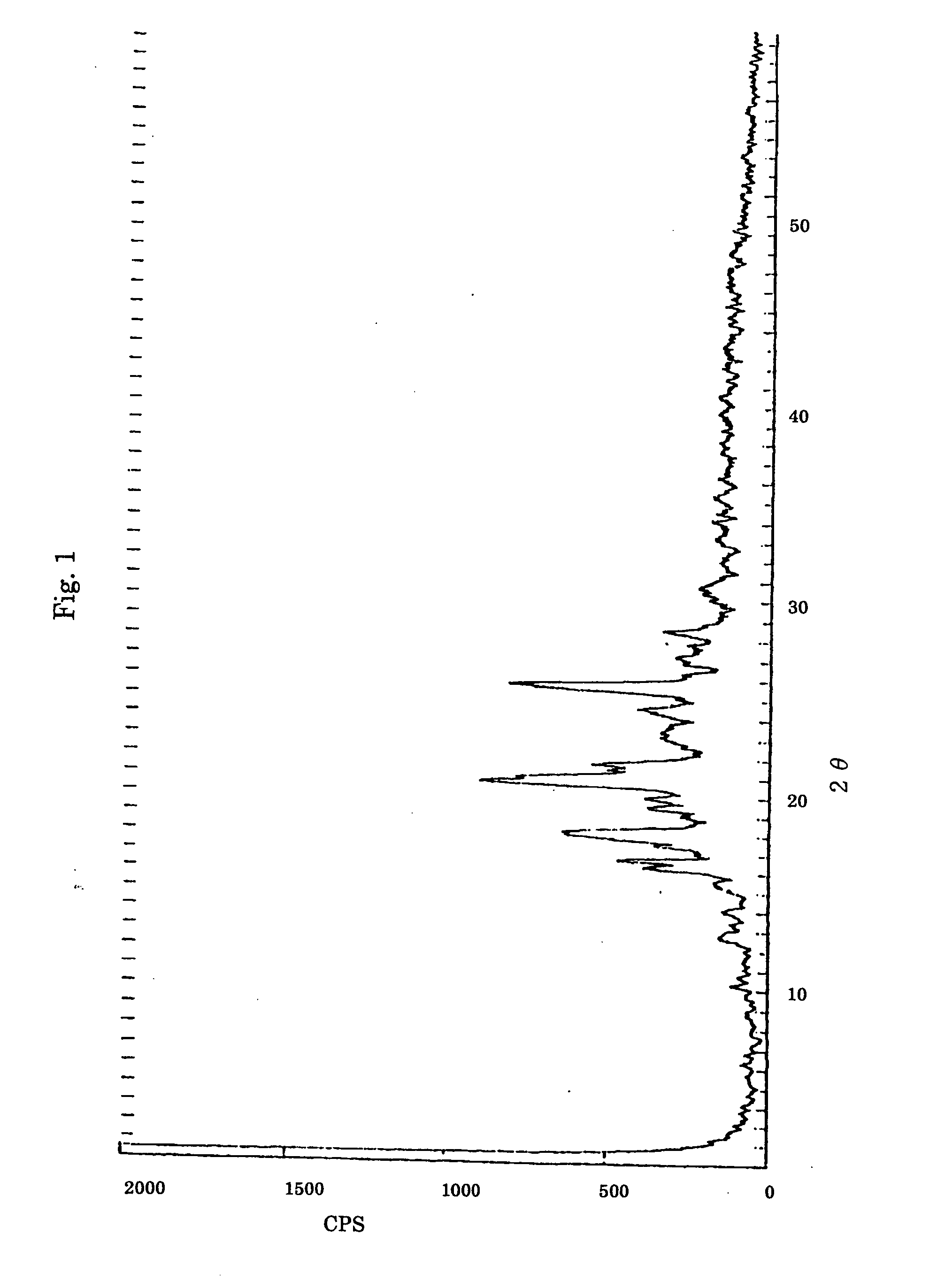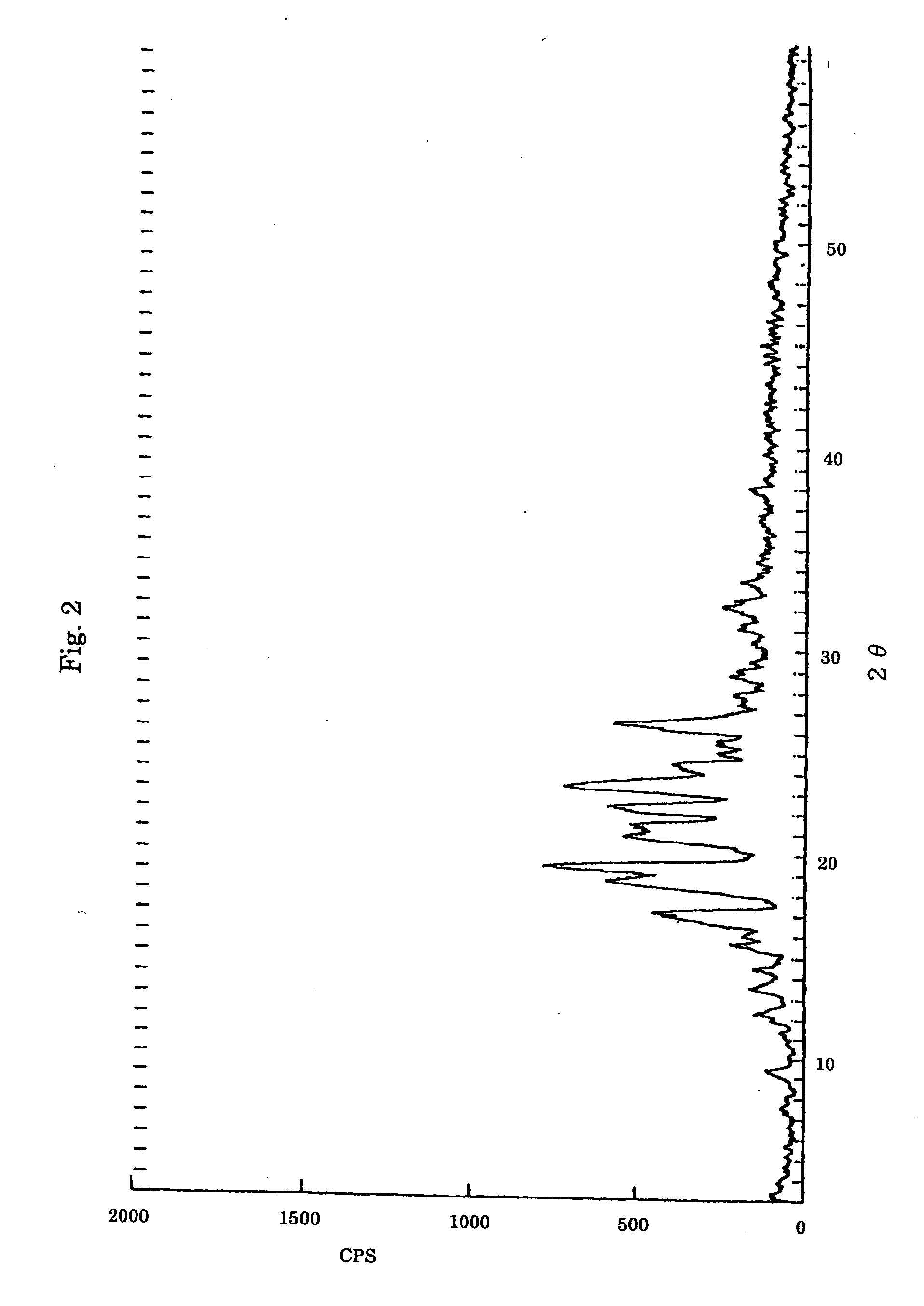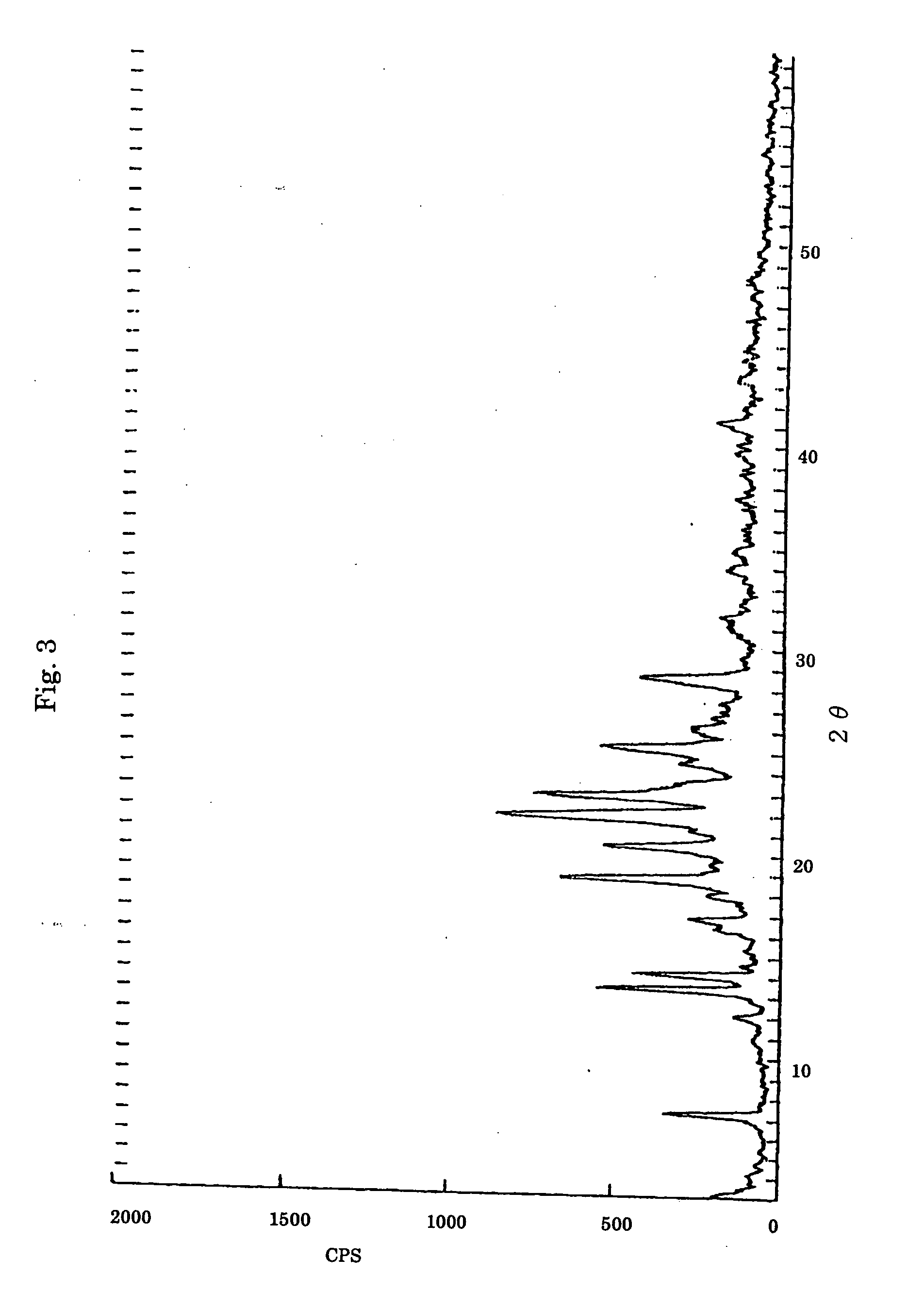Molecular compounds containing polymers having hydrogen bond sites as the constituent compounds
- Summary
- Abstract
- Description
- Claims
- Application Information
AI Technical Summary
Benefits of technology
Problems solved by technology
Method used
Image
Examples
example 2
Preparation of a molecular compound containing 1,1,2,2-tetrakis(4-hydroxyphenyl)ethane (TEP) and a polyether as constituent compounds (Part 2)
[0187] 3.1 mmol (1.25 g) of TEP and 0.05 mmol (10 g) of PEG having an average molecular weight of 20,000 were added to 70 ml of ethyl acetate and heated to dissolve. The resulting solution was left to stand for 24 hours at room temperature. The deposited white solid was separated by filtration and dried under reduced pressure at 45° C. for 2 hours using a rotary vacuum pump, to give a molecular compound of a composition ratio of TEP and the ethylene oxide (EO) unit of 1:7 (molar ratio). Tile obtained compound was confirmed to be the molecular compound of the said composition by 1H-NMR and X-ray diffraction patterns. It was also confirmed that the molecular compound had direction-specific intermolecular hydrogen bonds and orientating EO chains with rapid exchange between the gauche and trans conformations, from the wagging vibration absorption...
example 3
Preparation of a molecular compound containing 1,1,2,2-tetrakis(4-hydroxyphenyl)ethane (TEP) and a polyether as constituent compounds (Part 3)
[0188] 2.5 mmol (1.0 g) of TEP and 5.0 mmol (5.0 g) of polytetramethylene oxide having an average molecular weight of 1,000 (PTMO) were added to 10 ml of benzene and heated to dissolve. The resulting solution was left to stand for 24 hours at room temperature. The deposited white solid was separated by filtration and dried wide reduced pressure at 45° C. for 2 hours rising a rotary vacuum pump to give a molecular compound of a composition ratio of TEP and the tetramethylene oxide (TMO) unit of 1:4 (molar ratio). The obtained compound was confirmed to be the molecular compound of the said composition by 1H-NMR and X-ray diffraction patterns. It was also confirmed that the molecular compound had direction-specific intermolecular hydrogen bonds and orientating TMO chains with rapid exchange between the gauche and trans conformations, from the wa...
example 4
Preparation of a molecular compound containing 1,1,2,2-tetrakis(4-hydroxyphenyl)ethane (TEP) and a polyether as constituent compounds (Part 4)
[0189] 1.3 mmol (0.5 g) of TEP and 0.00025 mmol (0.5 g) of PEG having an average molecular weight of 2,000,000 were added to 50 ml of methanol and heated to dissolve. The density of the resulting solution was measured to be 500 ml by a B8R type rotational viscometer (made by Tokyo Keiki Co., Ltd.; rotor No. 1). A Teflon sheet of 0.08 mm thick was attached with a double-sided tape on a flat Pyrex Petri dish of 105 mm in diameter. The obtained solution was dropped to coat over the sheet with a Pasteur pipette. Methanol was gradually vaporized on a hot plate heated to about 40° C. When almost all the methanol was removed, the residue was further dried under reduced pressure at room temperature for 30 minutes using a rotary vacuum pump, to give a transparent cast film of a composition ratio of TEP and the EO unit of 1:9 (molar ratio). The obtaine...
PUM
| Property | Measurement | Unit |
|---|---|---|
| Hydrogen bond | aaaaa | aaaaa |
Abstract
Description
Claims
Application Information
 Login to view more
Login to view more - R&D Engineer
- R&D Manager
- IP Professional
- Industry Leading Data Capabilities
- Powerful AI technology
- Patent DNA Extraction
Browse by: Latest US Patents, China's latest patents, Technical Efficacy Thesaurus, Application Domain, Technology Topic.
© 2024 PatSnap. All rights reserved.Legal|Privacy policy|Modern Slavery Act Transparency Statement|Sitemap



